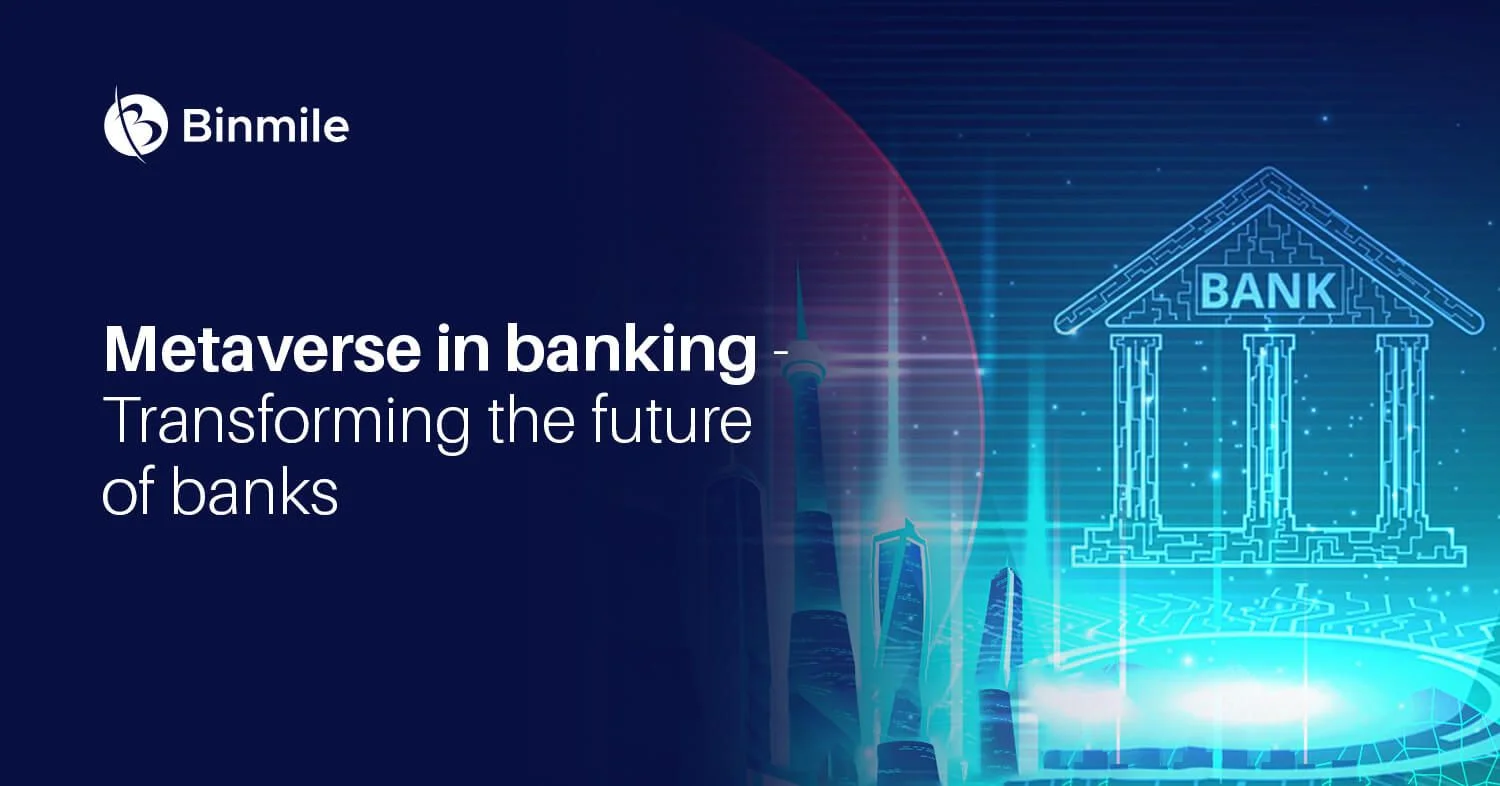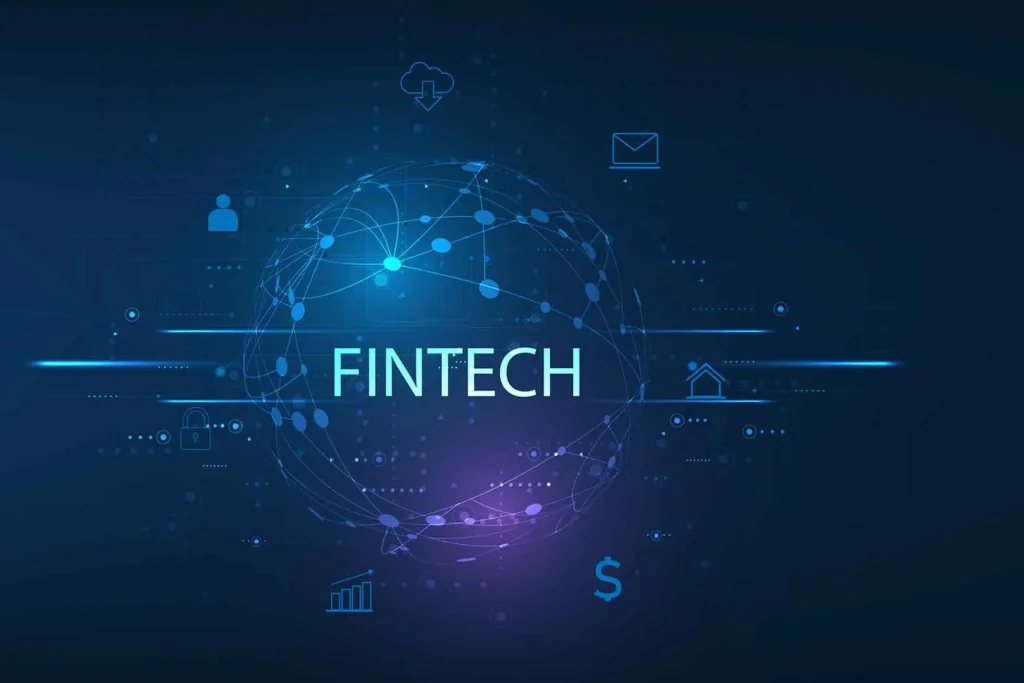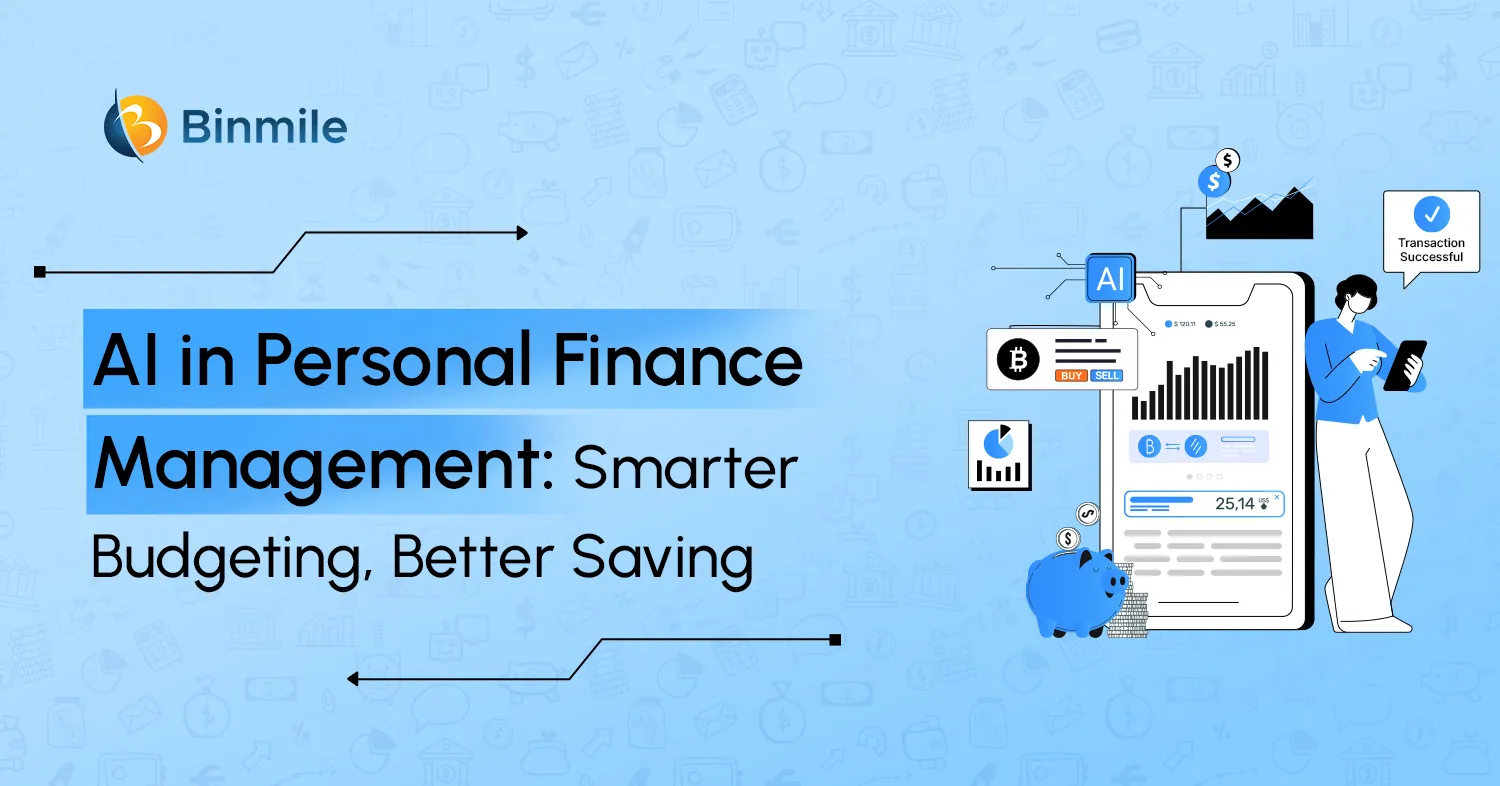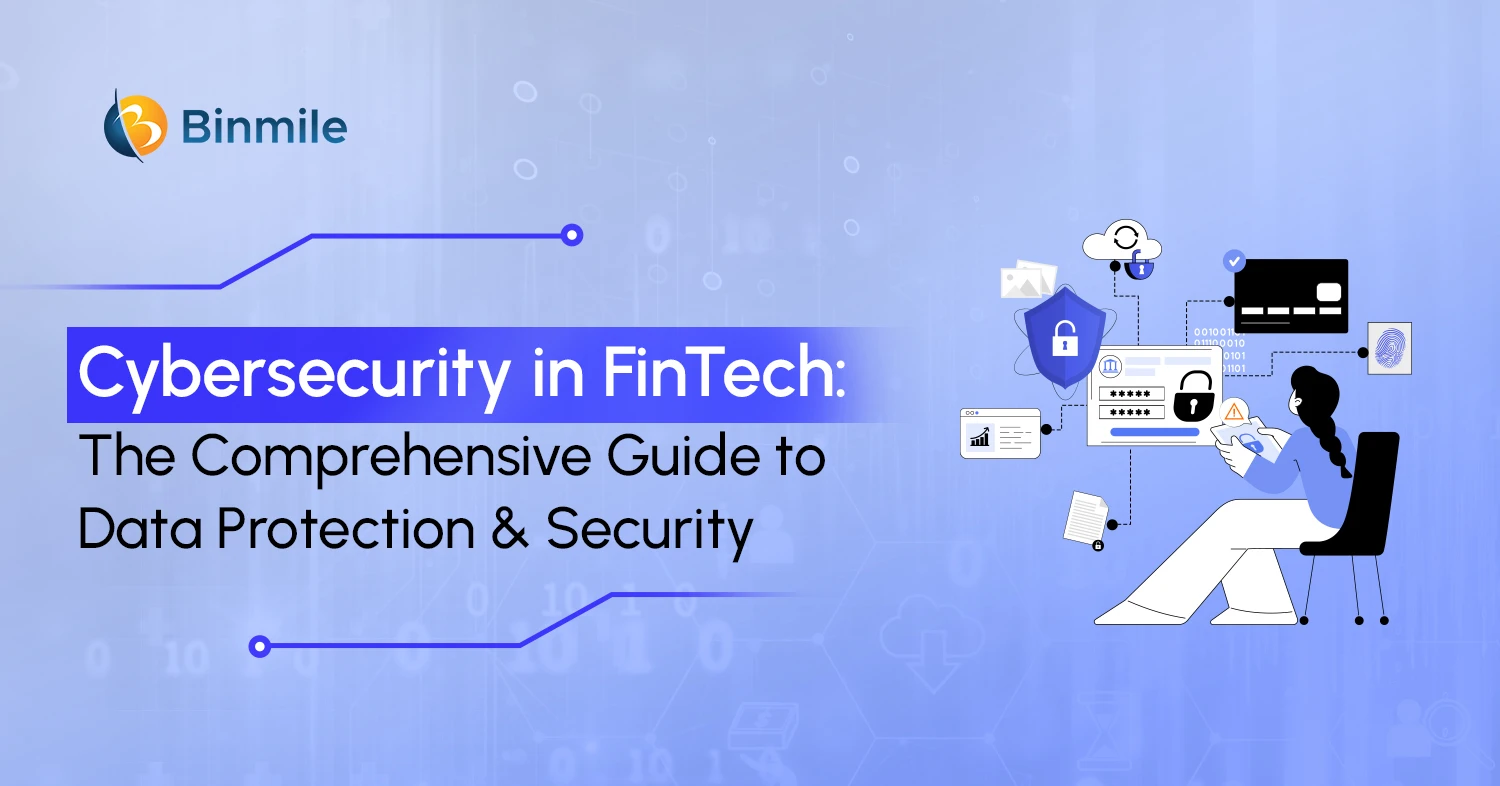Metaverse in banking is a conceptualized terminology of banking in the decentralized and immersive world of the virtual technology sector:
Now the question is why do we conceptualize Metaverse in banking?
Well, most banks believe that if they manage to capture the attention of customers in the early phase of their business existence, they may retain the customers for life. That explains why financial service providers tend to embrace new and emerging software development trends to stay relevant in their niche.
Metaverse, in this context, is surely a hot tech potato that banks seek to leverage. Adopting this technology would mean a quantum leap for banks in provisioning enhanced banking experience to their customers.
What is the Concept of Metaverse in Banking?
The concept of Metaverse in banking or Metaverse banking refers to the fusion of Metaverse and banking. The objective is to foster a more collaborative and decentralized banking experience for consumers. Technically speaking, it sounds like an ecosystem of decentralized and immersive virtual technology, enabling banks to efficiently render personalized products and services to their customers. For customers, it means interacting seamlessly with their bank’s representatives without having to visit the branch.
Metaverse in Banking – Statistical Overview of Metaverse in Finance
According to the Bloomberg report, Metaverse is likely to become an $800 billion market of the tech platform. It paves the convergence of physical and digital realms and attracts online game markets, social networks, and other tech leaders.

In addition, the market size of Metaverse in finance is expected to grow by USD 107.06 billion, increasing at a CAGR of 21.33% between 2022 and 2027. The market growth is subject to various factors, including Innovative Developments in AI, integration with AR and VR platforms, and the increasing mainstream popularity of cryptocurrencies.
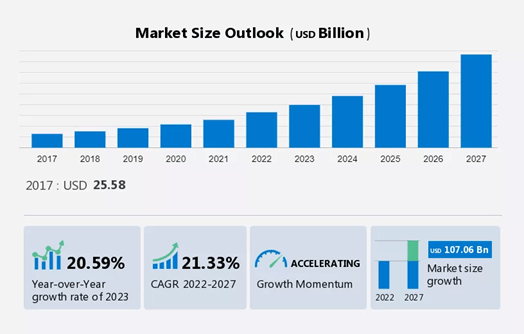
The Growth Driver of Metaverse in Banking
According to the report by Technavio, several factors may account for the growth of Metaverse banking. The integration with AI and VR platforms is one of the primary factors. The financial institutions are devising strategies to expedite their presence in the Metaverse. They prioritize consumers who spend more time in Metaverse banking to offer them better services and products. For customers, the convenience of handling all their banking and financial activities from anywhere through Metaverse banking by simply wearing VR glasses would be an unparalleled immersive experience.
The virtualized banking system will also enable participants in the Metaverse to track and visualize financial markets in a detailed way. Thanks to AR & MR (mixed reality)-based stock trading and investment for making this possible. Besides, the market data analysis is also getting more advanced, in terms of holographic representations, 3D figures, flat graphics, charts, etc.
As a result, users can experience a new definition of workplace interaction on laptops and mobile devices. Moreover, they can have the leeway to switch to virtual rooms and seek assistance from virtual agents. In turn, banks will efficiently manage the digital transition of their establishments by allowing clients to participate in the Metaverse economies and crypto, irrespective of how these things appear in the real world.
Also Read: Metaverse to Change the Future of Work: All You Need to Know
Metaverse Business Opportunities in the Banking Industry
Retail banks will use the Metaverse to create virtual branches to cater to Gen-Z consumers with a broad range of banking products or provide banking services to existing customers.
The Sandbox and other emerging Metaverse platforms like Decentraland experience a tremendous influx of visitors each month. On the other hand, reputed gaming platforms like Roblox or Fortnite, which are not entirely Metaverse but simulate Metaverse-like functionality, also attract millions of audiences. These audiences are digital natives interested in doing business with companies that share their understanding and enthusiasm for gaming-style environments and the virtual world.
The point is, HSBC became the first bank to set up virtual storefronts post purchasing a virtual real estate in The Sandbox Metaverse. The goal is to engage with online sports fans and e-sports enthusiasts. In an era when banks are becoming commoditized and deprived of emotional salience, the use of Metaverse appears to be a viable business opportunity.
For example, financial institutions will use the Metaverse to deliver financial advice and build relationships with customers. In fact, Metaverse will provide a unique way of banking by bringing humanity back into the conversation in ways seldom possible through app alerts and text notifications.
Read This: AI in Sports Industry
Metaverse Banking – Major Challenges
Challenge #01 – Regulation and Security Controls
The existing regulation and security controls have to ensure the safety of people in the Metaverse. This means whether their customer’s credit cards or physical assets are safe from attackers.
Challenge #02 – Identity Theft
What if attackers in the Metaverse clone lookalike identities out of stolen avatars? In that case, the repercussions will be unpleasant for all the participants in the Metaverse. No doubt, preventing identity theft is one of the most crucial challenges in the Metaverse.
Challenge #03 – Not Mass Adoption of Blockchain
It is no longer a secret that Metaverse mostly relies on blockchain technology to enable decentralized commerce. However, in light of several incidents pointing out to high-profile failures of organizations using blockchain, the market is rife with expectations about a potential slowdown in the adoption of blockchain in financial services.
Challenge #04 – Risky for Return on Investment (ROI)
Most people still rely heavily on traditional methods of accessibility, like mobile apps and the Internet for banking services. This is a clear sign for Metaverse technologies to replace traditional access methods. Under such circumstances, creating and maintaining a Metaverse presence will cost enormously with a poor likelihood of justifying the ROI.
List of Banks in the Metaverse
- HSBC
- J.P. Morgan
- Bank of America
- BNP Paribas
- KB Kookmin Bank
Metaverse in Banking – Transition of Banking from Traditional to Futuristic Metaverse
In this section of our discussion, we are going to discuss factors that lead to Metaverse banking. In other words, we are going to analyze what factors have prompted the necessity of Metaverse in the banking industry.
Traditional Bank
Imagine a traditional bank and you get a nostalgic memory of a physical establishment in which the involved parties avail and lend services. Apart from long wait hours and transaction processes heavily relying on manual work, traditional banks also require the physical presence of customers at the branch to avail of the services. Moreover, they also lack personal touch with their customers and thus end up being considered more like human relationship management.
Digital Banking
This is a transformed version of the traditional bank that has made banking convenient for customers, in terms of allowing paperless transactions via digital channels. Since banking is done through digital channels, the physical presence of account holders is no longer mandatory. In fact, this system of banking has caused an entire revamp of customer journeys and demand for decentralized and regulated data security. However, though the digitization of banking services has afforded convenience for customers, it is not entirely personalized and engaging.
Metaverse Banking
I think the advent of Metaverse banking is a wait long overdue. Why? For starters, traditional banks failed to have a personal touch with their customers and so ended up being more like human relationship management. Digital banks are certainly a transformed version of traditional banks. However, they have not successfully delivered a personalized and engaging model of banking with customers. Increasing cybersecurity threats and new regulatory compliances are factors depreciating the productivity of digital banks.
Point is, traditional financial companies seem to have detached from the reality of the rising expectations of customers and how they want to be served hassle-free. So, Metaverse banking is an exciting concept for them. Banks can leverage the immersive experience of Metaverse to invent new ways of engaging with next-generation customers. They can also use the technology for the expansion of their presence to the decentralized platforms and communities.
Read Further: Metaverse App Development Guide
The Rise of New Currencies – Paving the Path for Metaverse Banking Adoption
Blockchain technology has helped people trade, invest, and transact cryptocurrencies, aside from enabling the creation and transaction of Non-Fungible Assets (NFT) as well. Banks can try the Metaverse banking approach to streamline their banking operations and stay competitive in their niche. That’s because cryptocurrencies are catching up fast among younger generations of Gen Z and Millennials. Therefore, it would be interesting if banks can utilize Metaverse banking opportunities to cater to these customers who are also well-informed about the latest financial trends and technologies.
Metaverse Banking – Benefits of Banking in the Metaverse
Banks can benefit from various opportunities through Metaverse. For starters, the technology will help banks with innovative payment rails to empower transactions in a virtual world. It will help them attract young talent, engage with employees meaningfully, and connect with customers in a way that is more sensitive. Here is our quick rundown on the benefits banks can gain by adopting Metaverse banking.
Optimized Customer and Employee Experiences
AR and VR technology will help banks create customer and employee experiences in 3D. For instance, when talking in terms of Metaverse banking, we gather that banks will be able to offer customers the ability to check their balances. Besides, customers can also pay bills, make transfers and transact using AR/VR channels. Similarly, the technology will enable banks to deliver immersive learning experiences through simulated customer environments.
Innovative Ways of Engaging with Customers
The concept of banking in Metaverse is quite exciting for banks. With this approach, they will be able to ideate how to connect with customers, offer personalized advice, deliver empathetic service, and cultivate trust. In addition, Metaverse banking will benefit banks, in terms of virtualizing brand interactions, like cash withdrawal from an ATM, branding, endorsements, etc. According to Accenture Technology Vision 2022, 68% of banking executives worldwide think that the banking industry will experience a competitive differentiation by programming the physical environment.
Invent New Products and Services
Banking in the Metaverse offers various opportunities that financial institutions can leverage using a whole gamut of banking products and services. For example, banks will facilitate secure wallet functionality and payment rails for Metaverse products and services through digital payments. Digital twins, in a similar context, facilitate creating a virtual twin for a home, thus allowing a customer to tour the VR recreation of the property rather than simply browsing 2D photos and video. As a result, digital twins will enable banks to underwrite the loan.
Metaverse Banking – Transforming Relationship between Banks and Customers
Metaverse is a virtual ecosystem that banks can use to construct an emotive, collaborative engagement with their customers. It will pave the path for a better digital banking experience by bringing a more personal and human approach to virtual customer interactions. For instance, interacting with a virtual avatar of a bank representative could be a more immersive and interactive experience for customers than using a chat app. However, it is very important for banks to have a transparent two-way relationship in which customers are aware of the bank’s goals and intentions.
Conclusion
Metaverse banking is a concept of the revolutionary transformation of banks. It refers to a decentralized and immersive world of the virtual technology sector. Since banks believe in drawing the attention of customers in the early phase of their business establishment, adopting Metaverse banking is obviously a unique strategy for financial institutions. It allows them to enhance their banking experience for customers and stay competitive in their niche. Metaverse banking is the fusion of both Metaverse and banking aiming to build a more collaborative and decentralized banking experience for customers.
For banks, Metaverse offers golden opportunities to grow boundlessly in their niche. Customers, on the other hand, will appreciate their banks for adopting Metaverse to cater to their banking requirements faster, and in a way that is more emotive. Despite some challenges in the adoption of Metaverse banking, there is no doubt that the future of the Metaverse is the harbinger of the future of banking that would create an altogether unique banking experience for customers.
Last but not least, consider hiring a reputed company offering innovative banking software development services. It would help you with futuristic solutions you can maximize for better operational excellence of your business and stay relevant in your niche.
